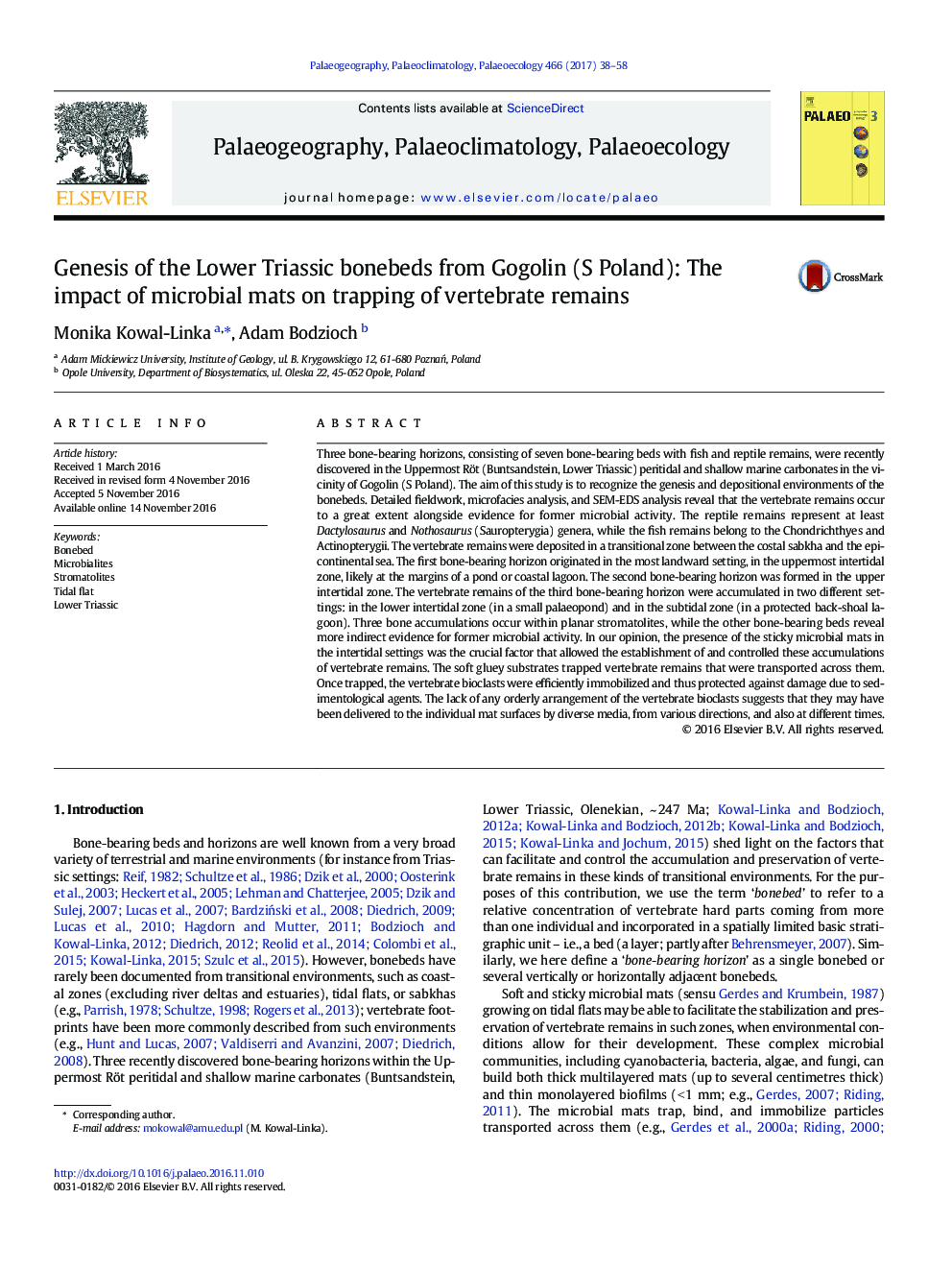| کد مقاله | کد نشریه | سال انتشار | مقاله انگلیسی | نسخه تمام متن |
|---|---|---|---|---|
| 5756018 | 1622126 | 2017 | 21 صفحه PDF | دانلود رایگان |

- Three Lower Triassic bone-bearing horizons were recently discovered (S Poland).
- The vertebrate remains accumulated in a transitional zone between a sabkha and a sea.
- The presence of microbial mats was the crucial factor controlling these accumulations.
- The microbial mats trapped reptile and fish remains transported across them.
- The reptile remains represent at least Dactylosaurus and Nothosaurus (Sauropterygia).
Three bone-bearing horizons, consisting of seven bone-bearing beds with fish and reptile remains, were recently discovered in the Uppermost Röt (Buntsandstein, Lower Triassic) peritidal and shallow marine carbonates in the vicinity of Gogolin (S Poland). The aim of this study is to recognize the genesis and depositional environments of the bonebeds. Detailed fieldwork, microfacies analysis, and SEM-EDS analysis reveal that the vertebrate remains occur to a great extent alongside evidence for former microbial activity. The reptile remains represent at least Dactylosaurus and Nothosaurus (Sauropterygia) genera, while the fish remains belong to the Chondrichthyes and Actinopterygii. The vertebrate remains were deposited in a transitional zone between the costal sabkha and the epicontinental sea. The first bone-bearing horizon originated in the most landward setting, in the uppermost intertidal zone, likely at the margins of a pond or coastal lagoon. The second bone-bearing horizon was formed in the upper intertidal zone. The vertebrate remains of the third bone-bearing horizon were accumulated in two different settings: in the lower intertidal zone (in a small palaeopond) and in the subtidal zone (in a protected back-shoal lagoon). Three bone accumulations occur within planar stromatolites, while the other bone-bearing beds reveal more indirect evidence for former microbial activity. In our opinion, the presence of the sticky microbial mats in the intertidal settings was the crucial factor that allowed the establishment of and controlled these accumulations of vertebrate remains. The soft gluey substrates trapped vertebrate remains that were transported across them. Once trapped, the vertebrate bioclasts were efficiently immobilized and thus protected against damage due to sedimentological agents. The lack of any orderly arrangement of the vertebrate bioclasts suggests that they may have been delivered to the individual mat surfaces by diverse media, from various directions, and also at different times.
393
Journal: Palaeogeography, Palaeoclimatology, Palaeoecology - Volume 466, 15 January 2017, Pages 38-58